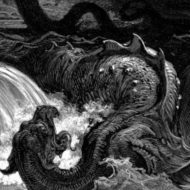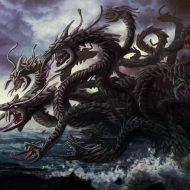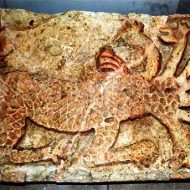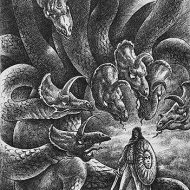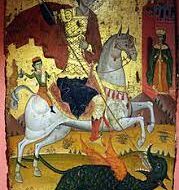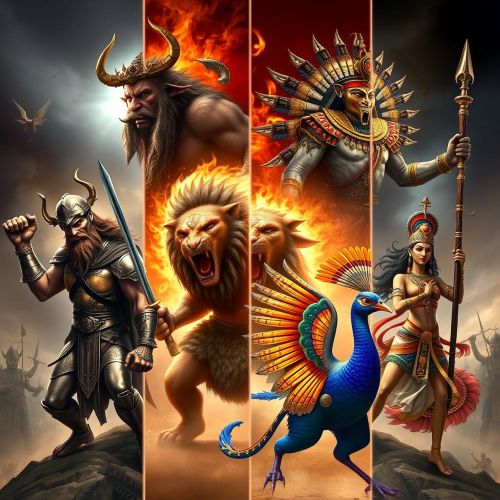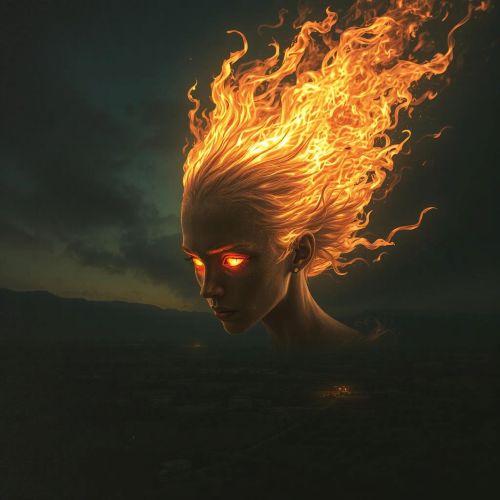Kucedra : The 7 headed dragon
Listen
At a glance
| Description | |
|---|---|
| Origin | Balkan Mythology |
| Classification | Animals |
| Family Members | N/A |
| Region | Albania |
| Associated With | Storms, Water |
Kucedra
Introduction
The kucedra or kulshedra is a mythological creature in Albanian mythology that is usually depicted as a large, multi-headed dragon with 7 heads. In Albanian mythology, she is usually attacked and defeated by a drangue, a divine being who is regarded as the protector of mankind.
In the northern cultures, the kucedra is believed to have the ability to take possession of the Moon and the Sun. In the southern tradition, the kucedra is described as a massive serpent who could destroy the world. She is also believed to require human sacrifices to avoid perpetuating disasters on earth.
The kucedra’s first stage is the bolla, a creature that has the appearance of a water and cosmic serpent. It’s eyes stay shut for the whole year except during Saint George’s Day, which is when it will devour anyone on sight. The bolla will eventually morph into kulshedra if it lives many years without being seen by a human.
Physical Traits
The bollar and the errshaja are intermediate forms of the serpent that have undergone various morphological changes. In other European cultures, the kucedra is depicted as a lizard, a turtle, or a male eel.
The kulshedra can also be portrayed as a woman who hides her true nature. According to folk beliefs, the villages where the kulshedra lives have great economic success especially in agriculture and livestock. She absorbs, by her breath, foodstuffs from neighbouring villages and her village thrives, while the affected villages become poor and do not prosper.
It’s widely believed that kulshedra are female dragons in a multi headed serpent form. They’re also known to have pendulous breasts covered in red woolly hair which touch the ground, a long tail and also possess 7 to 12 heads. It’s milk and urine are considered poisonous and while like other dragons, she can also breathe fire.
Other Names
The Kucedra is popularly known as the Kulshedra in many parts of Albania and commonly referred by both names.
Powers and Abilities
Kucedra is often considered a storm demon and it’s believed that its presence can cause water shortages and other natural disasters. To pacify it, humans are often sacrificed. In the southern portion of the country, the kulshedra are referred to as an enormous female serpent that can destroy the whole world. In the northern regions, the kulshedra are believed to possess the Moon and Sun.
Modern Day Influence
Saint George and Saint Elias (originally the Old Testament prophet Elijah) both have stories in which they fight (and defeat) a Bolla/Kulshedra. Saint Elias, in particular, is identified in some regions with the Dragùa and is also a weather god and provides protection against storms and fire.
Related Images
Frequently Asked Questions
What is the Albanian dragon myth?
Albanian dragon lore tells of a hero, Drangue, battling Kulshedra, a multi-headed dragon. Storms rage as they clash, representing nature’s duality of destruction and protection. Drangue’s victory brings peace, but the cycle restarts as another dragon rises.
What is a kulshedra dragon?
In Albanian mythology, a Kulshedra is not just a dragon, but a multi-headed, female, serpentine creature embodying chaos and natural disasters. It’s associated with water, fire, storms, and earthquakes, bringing droughts, floods, and other misfortunes.
Why is the kuchedra important?
Kulshedra, a multi-headed dragon, personifies nature’s untamed power, both destructive and life-giving. Its battles with the hero Drangue represent the eternal struggle between good and evil, shaping Albanian identity and sparking reflection on life’s cyclical nature.
What does the kulshedra mean?
The Kulshedra, literally meaning “amphibious snake,” symbolizes nature’s raw power, both destructive and life-giving. It embodies the eternal struggle between good and evil in Albanian mythology, becoming a powerful symbol of both the challenges and resilience within their culture.

